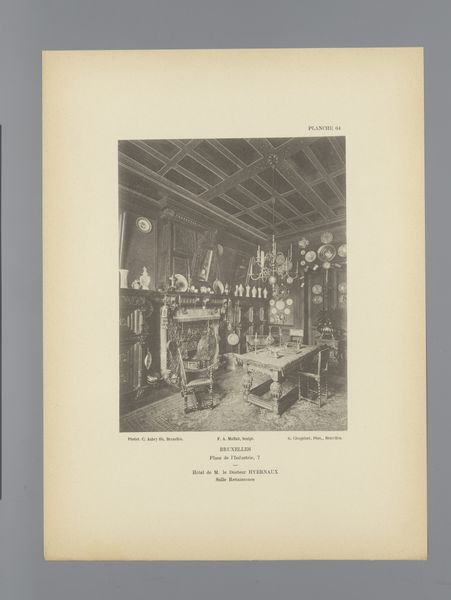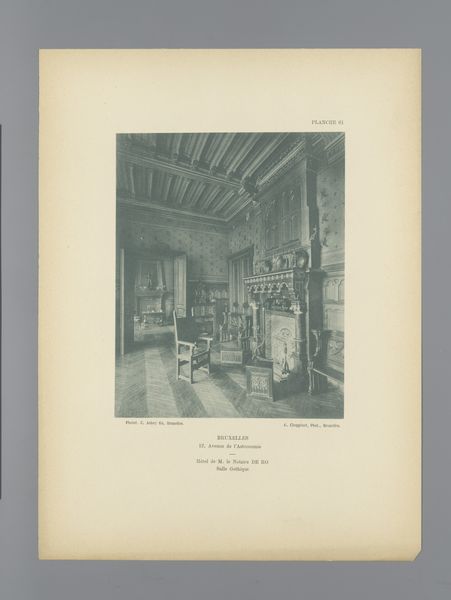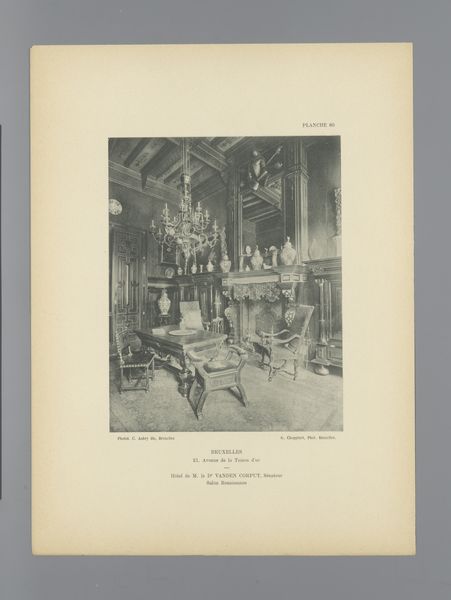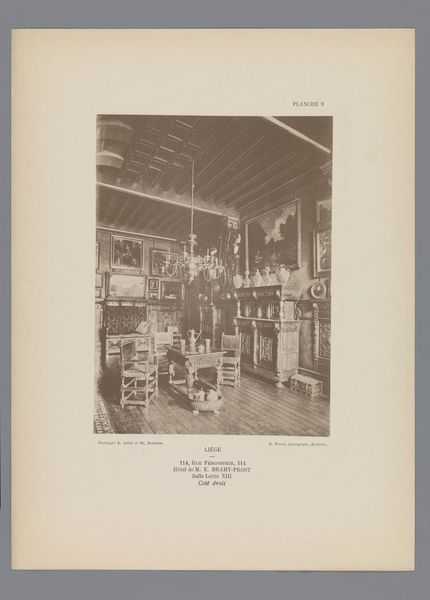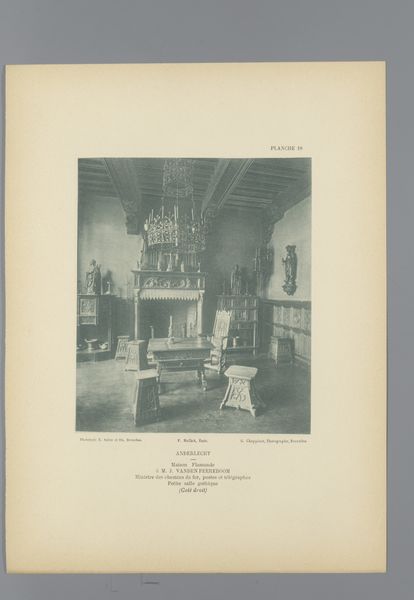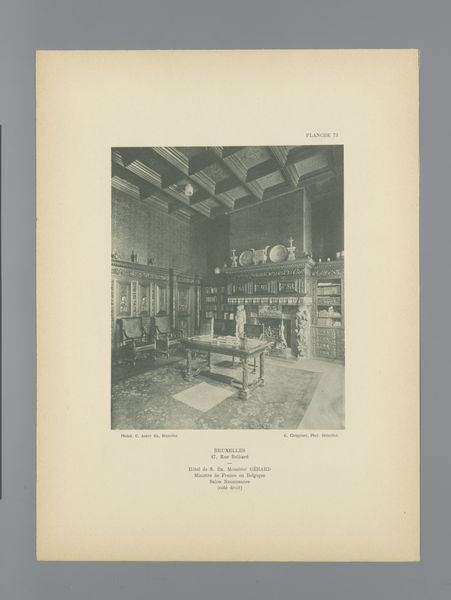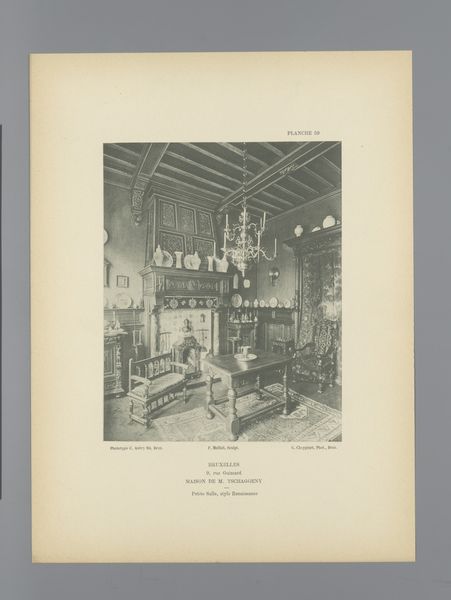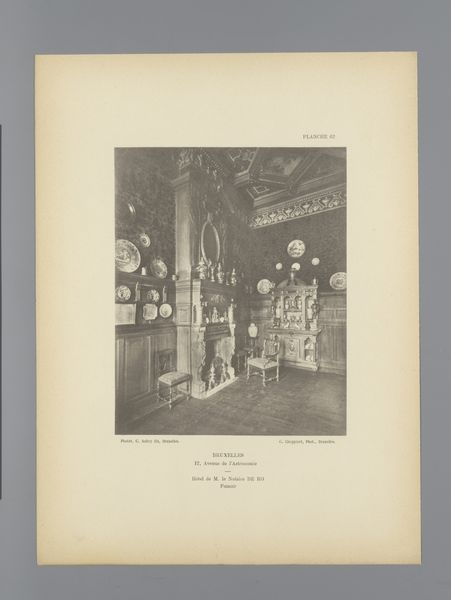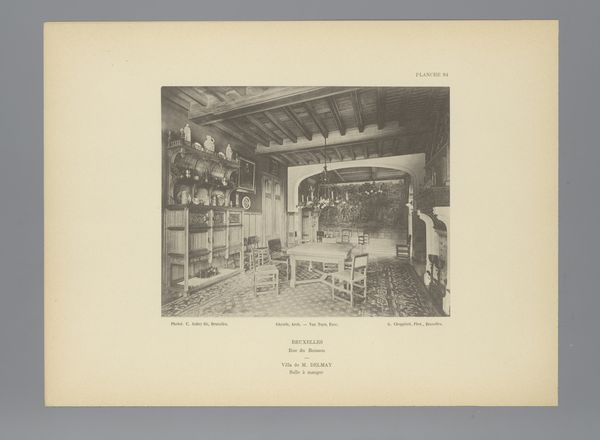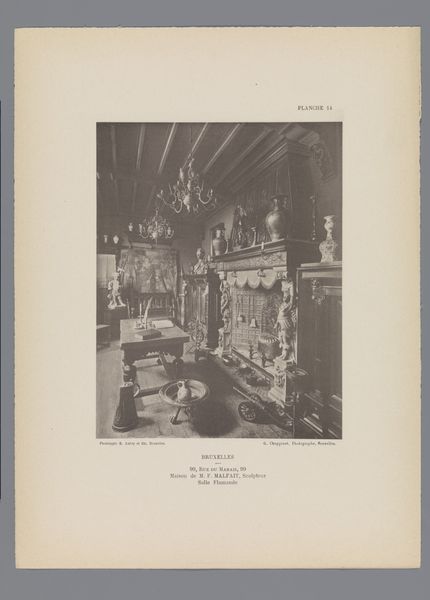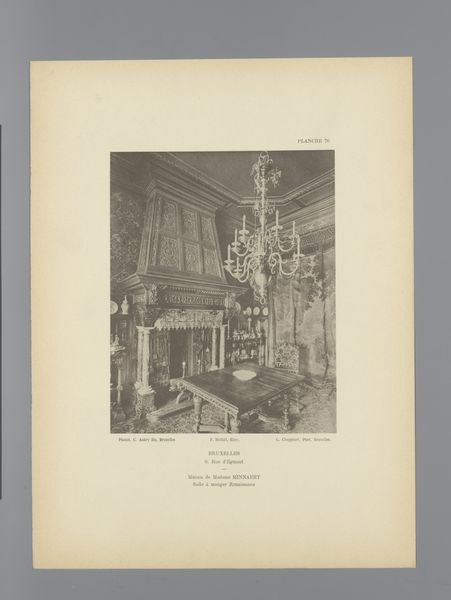
Gezicht op de eetzaal in het huis van Edouard van den Corput in Brussel, België before 1898
0:00
0:00
print, photography
# print
#
landscape
#
photography
#
realism
Dimensions: height 200 mm, width 157 mm
Copyright: Rijks Museum: Open Domain
Curator: This intriguing photographic print, “Gezicht op de eetzaal in het huis van Edouard van den Corput in Brussel, België," was created before 1898 by G. Choppinet. What's your immediate reaction to this domestic scene? Editor: My first impression is the overwhelming sense of order, a constructed perfection that seems to speak of rituals rigidly adhered to. The composition itself is highly symmetrical, a deliberate choice. Curator: Indeed, the symmetry is crucial to its formal structure. Notice how the photographer employs a central perspective, anchoring the viewer’s gaze, with objects like the fireplace and table functioning as visual anchors. This rigid structure seems to almost create a sense of forced opulence. Editor: I agree. Considering this photograph was taken in the home of Edouard van den Corput, we can't ignore the socio-economic context. The carefully arranged objects speak to a very specific vision of bourgeois domesticity and social status. The photograph then acts almost as a form of propaganda. Curator: Precisely. Also consider how the photographer uses light and shadow. There is subtle play, a dance if you will, between these opposing forces to suggest depth within the space and the textures in the wallpaper and wood. However, the monochromatic choice is deliberate in reducing any visceral reaction. Editor: It also reduces individuality and emotion. There isn’t anyone here; just a room carefully curated. Wouldn't you say that reinforces a particular set of values circulating in that era, especially amongst the upper classes, who embraced decorum? Curator: Most certainly, it exemplifies the prevailing aesthetic sentiments of the period, an obsession with capturing reality, yes, but perhaps even more, with imposing a specific worldview on it. Editor: What I appreciate, reflecting on our conversation, is how this apparently simple photograph embodies the complexities of class, the politics of representation, and the era’s understanding of interiority as a symbol of self. Curator: And how the strict formality actually reveals the tensions that underscored the historical construction of identity, space and societal expectations within that particular period.
Comments
No comments
Be the first to comment and join the conversation on the ultimate creative platform.
